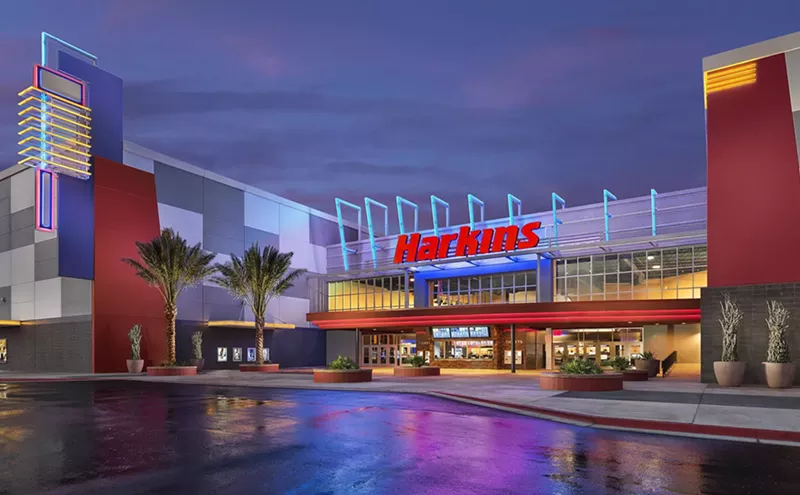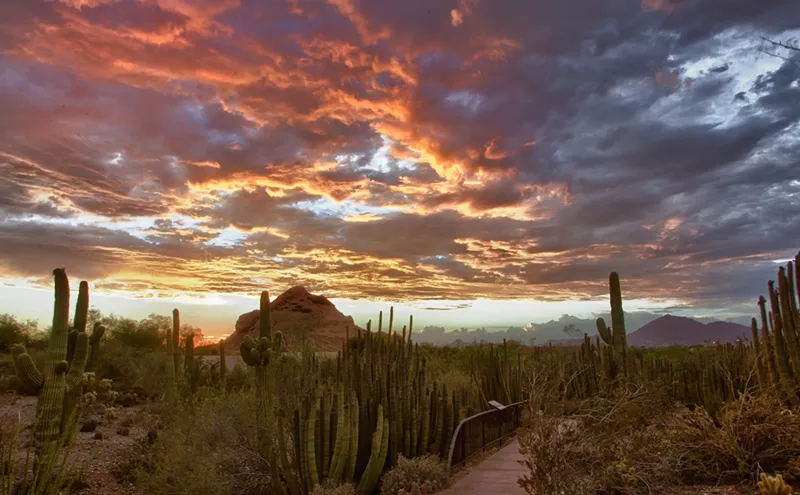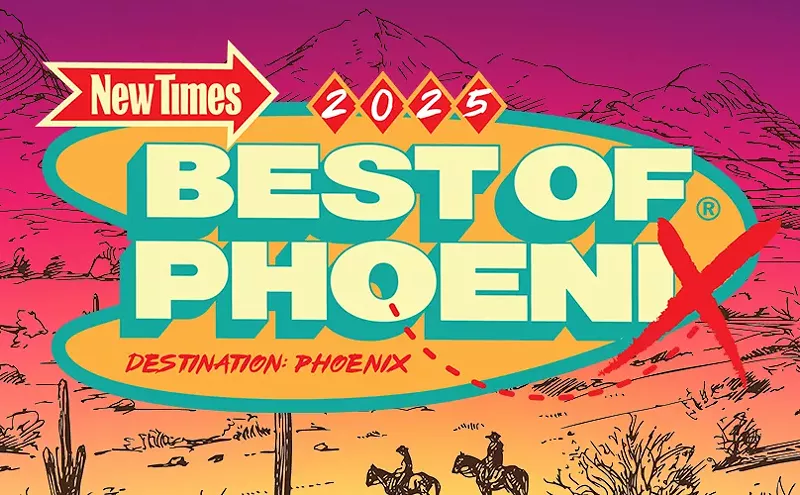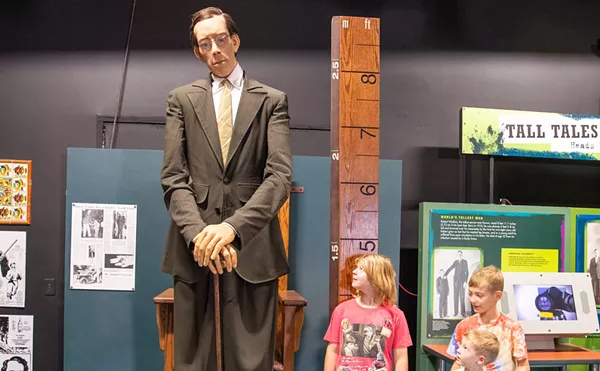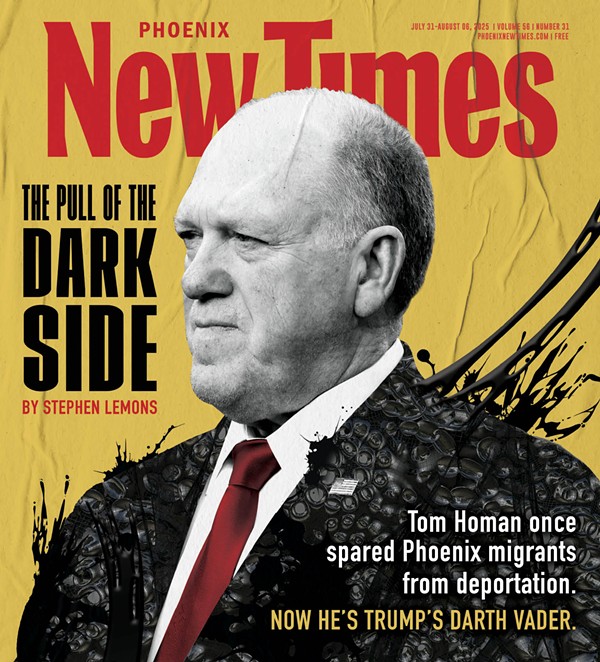For the first time since late-’60s urban renewal chased Phoenicians from the city’s core and into the suburbs, sales of condominiums are passing those of single-family dwellings here.
The Valley is home now to a record number of townhome, condominium, and loft developments. In 1997, Phoenix topped the nation’s list of cities with vacant landfill; today, builders are waging bidding wars to get hold of the same empty parcels. Likewise, older buildings — even the eyesores — are being snapped up for adaptive reuse programs that turn them into high-density infill developments.
East and West Valley cities are seeing their own infill developments, as well: Glendale, Gilbert, Chandler, Mesa and Peoria are all selling condominium developments faster than single-family houses. But the downtown condo projects — which include Phoenix high-rises at Portland on the Park, Scottsdale's concrete-and-steel Envy Residences and the downtown Aerium lofts — have the highest coming-soon profile.
The median price of new, high-end downtown condos, according to a recent report in the Arizona Business Journal, is up 15 percent. That increase puts new downtown condos at an average price of about $150 per square foot, up from $123 in February 2013. Most offer fees-funded amenities including common-use areas, gardening, and some maintenance. Swimming pools and clubhouses are replacing considerations like curb appeal in these condos and other low-maintenance, high-density housing developments.
Why now? Scott Jarson of Jarson and Jarson, a real estate firm that specializes in the sales and marketing of unique Valley homes, has some ideas. “I think the recession made Phoenicians rethink their priorities and their lifestyles,” he says. “A desire to spend less led to a less-is-more ethic.”
That, Jarson says, coincided with the redevelopment of downtown’s inner core, lately more vibrant with better restaurants, shopping, and culture. “Suddenly, we’re looking at the community we live in and saying, ‘Downtown is more interesting. I want to live there.’”
That turnaround, Jarson says, is distinctively Phoenix. “In many cities, the movers and shakers who are dictating the way a city is shaped are the bankers and the financiers. Here, the people who have been doing the directing are restaurateurs and artists.” These creatives, Jarson believes, are building vibrant neighborhoods that have recently merged to become a more vibrant downtown — the kind of downtown that people are less likely to want to leave at the end of the workday. Developers are noticing.
“We’re getting more calls for new buildings that are in town,” Jarson says. Right now, that means more condos. It also means that the city is losing some of its best sites to deep-pockets builders who can afford the highest bid. For now, sites that might have been home to exceptional live-work environments are instead being developed as workaday complexes, like the much-disparaged 367-unit Lennar development at Central Avenue and McDowell Road. The trend will shift toward more interesting buildings, Jarson says.
“In the meantime, we’ve lost some good lots,” says Jarson, whose current project is the Coronado Commons, a development of high-efficiency townhomes built on what he calls “a collective commons” concept at Third Street and Coronado. It’s a venture that proves, Jarson says, that investors are interested in more interesting, out-of-the-box living environments in downtown Phoenix.
“This is as exciting a time to live in Phoenix as any other in my memory,” says Jarson, who’s lived in the Valley his whole life. “The city is coalescing around a sense of place that we haven’t had for decades. And it’s getting better every year.”
But will the Valley's rush to infill and build high-rise condos lead to a burst bubble down the road? In a Forbes article published early last year, real estate investment advisor Jason Hartman warned that a similar situation in Miami doesn’t bode well for that city. “Miami represents one of the most notorious bubble markets in the United States,” he said. “High-rise condominiums bore the brunt of Miami’s value freefall.” He believes “investing in Miami condominiums is still problematic.” In Miami, 72 percent of its condos are paid for in cash, which isn’t the case in Phoenix or Scottsdale.
Time will tell.

Audio By Carbonatix
[
{
"name": "GPT - Billboard - Slot Inline - Content - Labeled - No Desktop",
"component": "21251496",
"insertPoint": "2",
"requiredCountToDisplay": "2"
},{
"name": "STN Player - Float - Mobile Only ",
"component": "21327862",
"insertPoint": "2",
"requiredCountToDisplay": "2"
},{
"name": "Editor Picks",
"component": "16759093",
"insertPoint": "4",
"requiredCountToDisplay": "1"
},{
"name": "Inline Links",
"component": "17980324",
"insertPoint": "8th",
"startingPoint": 8,
"requiredCountToDisplay": "7",
"maxInsertions": 25
},{
"name": "GPT - 2x Rectangles Desktop, Tower on Mobile - Labeled",
"component": "21934225",
"insertPoint": "8th",
"startingPoint": 8,
"requiredCountToDisplay": "7",
"maxInsertions": 25
},{
"name": "Inline Links",
"component": "17980324",
"insertPoint": "8th",
"startingPoint": 12,
"requiredCountToDisplay": "11",
"maxInsertions": 25
},{
"name": "GPT - Leaderboard to Tower - Slot Auto-select - Labeled",
"component": "17012245",
"insertPoint": "8th",
"startingPoint": 12,
"requiredCountToDisplay": "11",
"maxInsertions": 25
}
]

